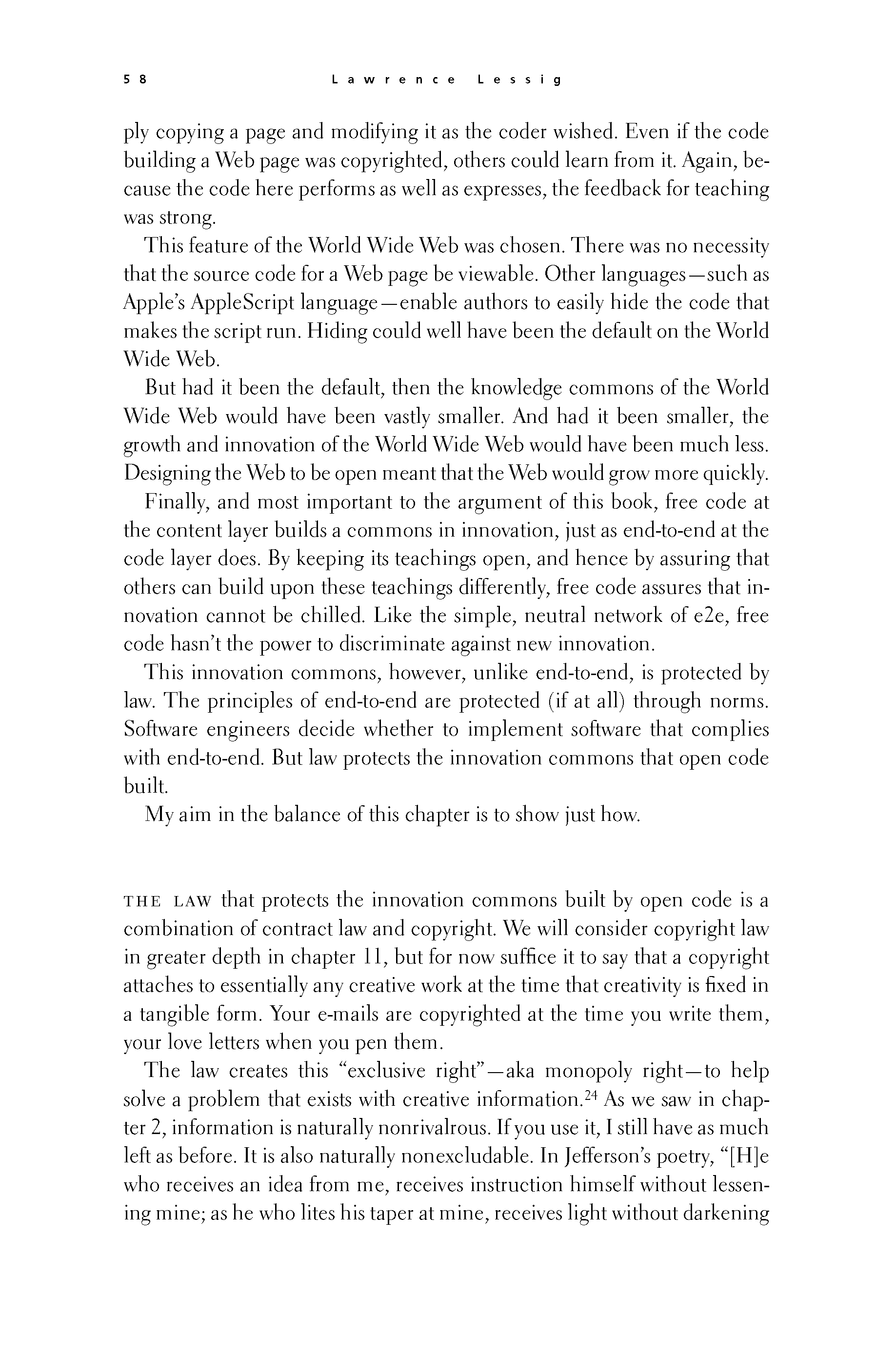 p057 _
-chap- _
toc-1 _
p058w _
toc-2 _
+chap+ _
p059
p057 _
-chap- _
toc-1 _
p058w _
toc-2 _
+chap+ _
p059
ply copying a page and modifying it as the coder wished. Even if the code
building a Web page was copyrighted, others could learn from it. Again, be-
cause the code here performs as well as expresses, the feedback for teaching
was strong.
This feature of the World Wide Web was chosen. There was no necessity
that the source code for a Web page be viewable. Other languages -- such as
Apple's AppleScript language -- enable authors to easily hide the code that
makes the script run. Hiding could well have been the default on the World
Wide Web.
But had it been the default, then the knowledge commons of the World
Wide Web would have been vastly smaller. And had it been smaller, the
growth and innovation of the World Wide Web would have been much less.
Designing the Web to be open meant that the Web would grow more quickly.
Finally, and most important to the argument of this book, free code at
the content layer builds a commons in innovation, just as end-to-end at the
code layer does. By keeping its teachings open, and hence by assuring that
others can build upon these teachings differently, free code assures that in-
novation cannot be chilled. Like the simple, neutral network of e2e, free
code hasn't the power to discriminate against new innovation.
This innovation commons, however, unlike end-to-end, is protected by
law. The principles of end-to-end are protected (if at all) through norms.
Software engineers decide whether to implement software that complies
with end-to-end. But law protects the innovation commons that open code
built.
My aim in the balance of this chapter is to show just how.
///\\\
The law that protects the innovation commons built by open code is a
combination of contract law and copyright. We will consider copyright law
in greater depth in Chapter 11, but for now suffice it to say that a copyright
attaches to essentially any creative work at the time that creativity is fixed in
a tangible form. Your e-mails are copyrighted at the time you write them,
your love letters when you pen them.
The law creates this "exclusive right" -- aka monopoly right -- to help
solve a problem that exists with creative information.[4-24] As we saw in chap-
ter 2, information is naturally nonrivalrous. If you use it, I still have as much
left as before. It is also naturally nonexcludable. In Jefferson's poetry, "[H]e
who receives an idea from me, receives instruction himself without lessen-
ing mine; as he who lites his taper at mine, receives light without darkening
[[58]]
p057 _
-chap- _
toc-1 _
p058w _
toc-2 _
+chap+ _
p059